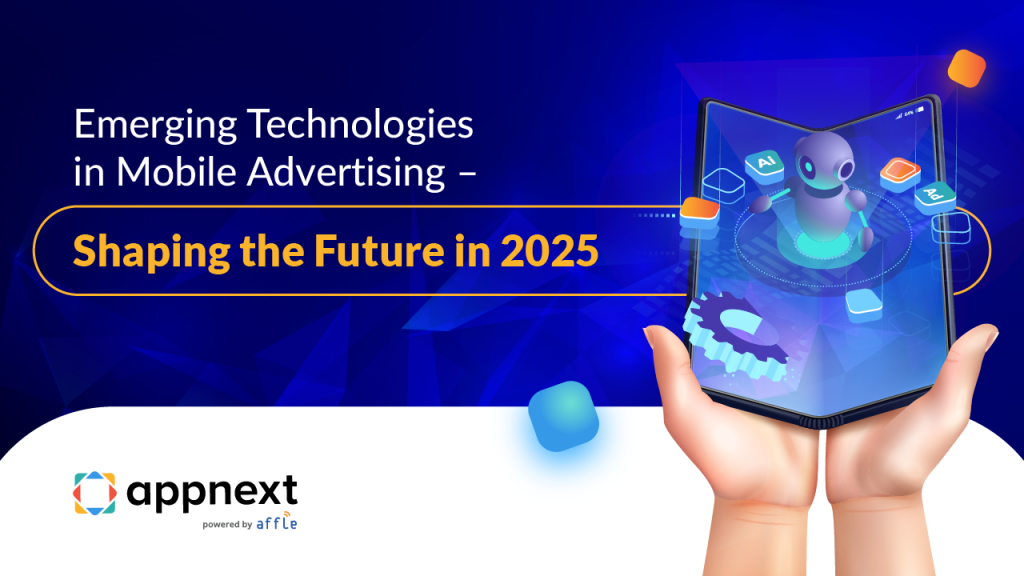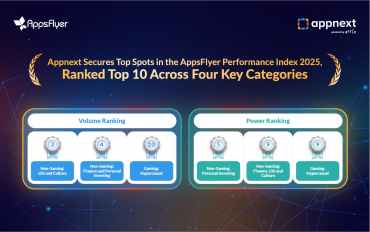
As we move further into 2025, mobile advertising continues to evolve at an extraordinary pace, driven by the latest technological advancements. With mobile commanding over 70% of global digital ad spend, forward-thinking brands are leveraging a suite of transformative technologies, including AI, programmatic advertising, multi-touch attribution, and more, to create personalized, high-impact experiences. These innovations are empowering advertisers to establish deeper, real-time connections with users, positioning them to lead in a highly competitive market.
Mobile ad spend is set to exceed $400 billion globally in 2025, with 95% of marketers intending to increase their investment in AI-driven strategies. This paradigm shift is opening new avenues for brands to engage with consumers more effectively, reshaping the future of customer acquisition, retention, and loyalty. (Source)
This article explores the key innovations that are reshaping the mobile advertising industry and how they’re driving the next wave of growth and opportunity.
1. Artificial Intelligence and Machine Learning
AI and ML are no longer just buzzwords—they are indispensable tools transforming how brands connect with consumers. By analyzing real-time data, AI ensures campaigns deliver highly targeted messaging that reaches the right audience at the optimal moment. This empowers brands to shift from reactive to proactive strategies.
Imagine discovering an app that perfectly aligns with your preferences—AI makes this possible by analyzing your behavior, offering personalized recommendations. By utilizing AI, brands can automate audience segmentation and predict consumer behavior with precision. AI-powered bidding strategies maximize return on ad spend, while personalized creative optimization based on user preferences drives higher engagement and conversions.
2. Programmatic Advertising 2.0
Programmatic advertising is entering a new phase, where advancements in automation and transparency are paving the way for smarter, more effective ad delivery. As privacy regulations tighten and third-party cookies phase out, AI-powered contextual targeting engines are enabling advertisers to refine their strategies by aligning ads with relevant content, ensuring that campaigns are delivered in privacy-compliant environments. These innovations provide more control over targeting and fraud detection, increasing engagement and improving the overall media-buying process.
3. Augmented Reality (AR) and Virtual Reality (VR)
While AR and VR are gaining traction in mobile advertising, AI-powered ad networks are enabling these immersive technologies to become more integrated with app discoverability. For example, AR-powered product demos enable users to interact with products before downloading an app, while AI recommendation engines ensure these ads are relevant and engaging in real-time by offering interactive and visually rich ad formats. This immersive experience not only helps you make a decision but also increases your purchase intent. With advancements in device capabilities and 5G connectivity, AR and VR adoption will be big in 2025. Virtual try-ons, AR-powered demos, and gamified experiences are proving to be powerful tools for immersive brand engagement and memorable campaigns, particularly as device capabilities and 5G networks continue to evolve.
4. 5G and Edge Computing
The roll-out of 5G and the rise of edge computing are further revolutionizing the ad landscape. With the ability to deliver faster speeds and reduced latency, 5G enables more dynamic and personalized ad experiences, particularly in high-quality video, AR, and interactive formats. AI-driven recommendation engines leverage these capabilities to deliver ads in real-time, ensuring seamless user experiences with zero buffering and smooth live-streamed events. Edge computing takes this further by optimizing data processing closer to users, improving performance and reducing delays, which is especially important for industries like sports broadcasting and online gaming that demand high interactivity and real-time engagement.
5. Blockchain for Ad Transparency
Blockchain technology is emerging as a solution to the challenges of fraud and transparency in mobile advertising. By leveraging decentralized ledgers, blockchain ensures that ad impressions are verified and that advertisers pay only for genuine engagements. This not only eliminates fraudulent impressions but also creates a more transparent and accountable ecosystem, building trust between advertisers, publishers, and consumers. With secure, tamper-proof data sharing, blockchain offers a solution to long-standing issues in the industry, ensuring that campaigns are delivered with integrity.
6. Voice Search and Audio Advertising
The growing use of voice search and audio assistants is also creating new opportunities for mobile advertisers. Voice-activated ads integrate naturally into conversations, offering non-intrusive ways to engage consumers. These ads can be personalized to align with user intent, particularly as audio content such as podcasts and streaming continues to rise in popularity. Integration with smart speakers and mobile voice assistants further enhances the user experience. Advertisers can now develop voice-first strategies to create conversational experiences that resonate with users and increase engagement.
7. Sustainability and Green Advertising
As sustainability becomes a top priority for consumers, mobile advertisers are adopting eco-friendly strategies to align with these values. In fact, studies show that 70% of consumers prefer brands with sustainability initiatives, making green advertising a competitive advantage. Green advertising is gaining traction as more brands move to carbon-neutral ad servers and renewable energy-powered networks, ensuring that their advertising efforts are both effective and sustainable. By leveraging AI to optimize ad performance and reduce energy consumption, brands can engage eco-conscious consumers, offering them products and services that align with their environmental priorities.
8. Advanced Attribution Models
Accurate attribution remains a top priority for mobile advertisers. Emerging attribution models provide a holistic view of the customer journey by integrating cross-device and cross-platform tracking. These solutions enable multi-touch attribution, capturing complex user behaviors. AI-driven insights into these journeys provide real-time campaign adjustments. This level of granularity enables advertisers to optimize campaigns with greater precision, ensuring maximum return on ad spend.
Conclusion: Preparing for the Future
Emerging technologies bring new opportunities and challenges, creating a dynamic landscape for advertisers. To succeed, businesses must embrace innovation, prioritize data-driven strategies, and remain agile in the face of rapid change.
For global leaders and adtech professionals, the path forward is clear: cultivate strategic technology partnerships, stay attuned to evolving consumer behaviors, and leverage advanced solutions to foster meaningful connections.
The future of mobile advertising lies at the intersection of technology and creativity. By investing in emerging technologies and adopting a forward-thinking approach, brands can deliver impactful campaigns that resonate with audiences and drive meaningful results in 2025 and beyond.



Comments are closed.